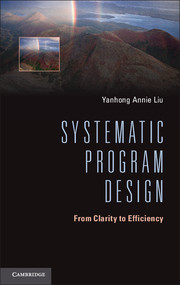3 - Sets: incrementalize and implement
Published online by Cambridge University Press: 05 June 2013
Summary
Most computer applications must handle collections of data. A set is a collection of distinct elements. Operations on sets, such as union and difference of the elements of two sets, are higher-level than operations on arrays, which are assignment and access of elements at indexed positions. The largest class of computer applications that involve collections is database applications, which typically handle large collections of data and provide many kinds of queries and other functionalities. Because of their higher-level nature, sets and set operations can be used to express problem solutions more clearly and easily, and have been used increasingly in programming languages, though typically only in applications that are not performance critical.
Problem solutions programmed using high-level set operations typically have performance problems, because high-level set operations typically involve many elements and are often repeatedly performed as sets are updated. To improve performance of applications programmed using sets, expensive high-level operations on sets must be transformed into efficient incremental operations, and sets must be implemented using data structures that support efficient incremental operations. These correspond to Steps Incrementalize and Implement, respectively. Step Iterate just determines a simple way of iteration that adds one element at a time to a set.
Because graph problems are typically specified using sets, we first describe the method using the graph reachability problem as an example, showing how efficient graph algorithms can be derived systematically.
Information
- Type
- Chapter
- Information
- Systematic Program DesignFrom Clarity to Efficiency, pp. 53 - 82Publisher: Cambridge University PressPrint publication year: 2013
